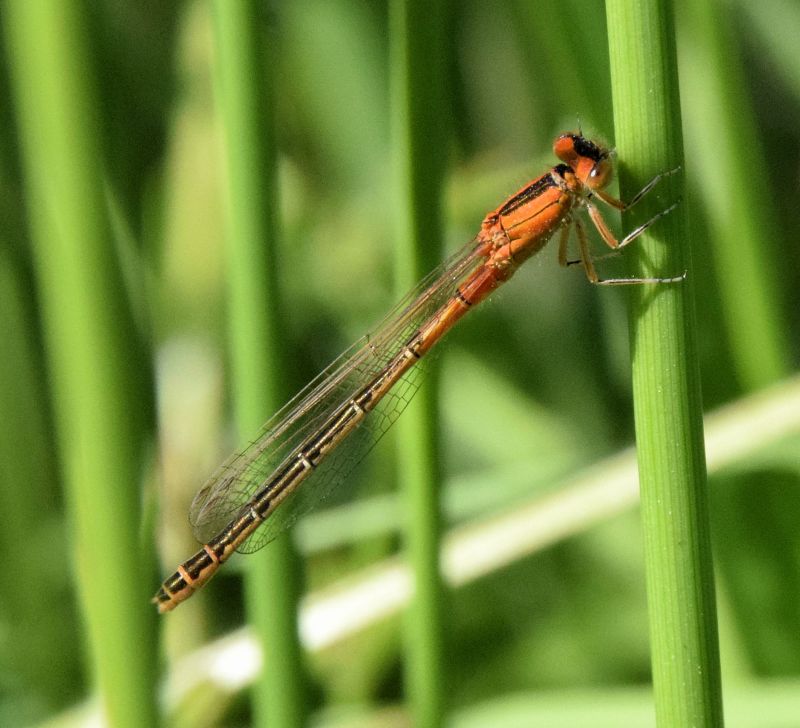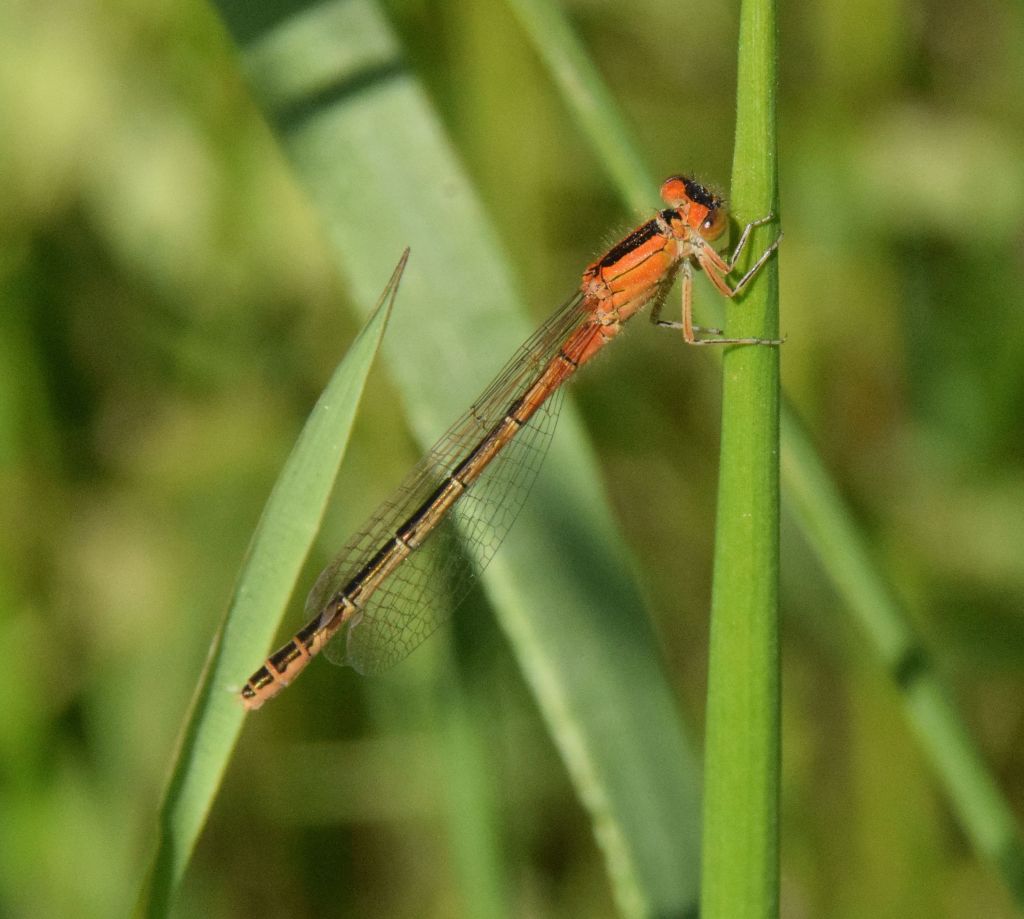Since it was recorded in my home county for the first time this century at Banbury in 2020 (see here and here), Oxon Odo enthusiasts have uncovered more Scarce Blue-tail colonies at new housing developments in Didcot and Grove. This damselfly tends to occur in the transient habitat of “storm water ponds” and flooded ditches that recent and active building sites provide, and this year I decided to get around all the locations as they are reported. The prize is the orange teneral female form Aurantiaca that holds a special fascination for me. Why go to the New Forest (see here) when I can now observe them locally?
This year’s first sighting came from Didcot on 27th May, and after being briefed by the finder Ian Lewington I went to take a look six days later. What awaited me on the sunny Friday afternoon of 2nd was a superb wildlife eco-system in the form of twin, reed-filled storm water ponds on the edge of Dida Gardens new homes (SU509910). I was about to learn that many such developments have these features, to collect surplus rainwater run-off and prevent flooding, and they are quickly colonised by odonata and other invertebrates. This one has been here for just three years.
I made two circuits of one small pond, picking out a male Scarce Blue-tailed Damselfly amongst plenty of other blue damselflies and several Large Reds. Some Dragonflies were also on the wing: Hairy Hawker, Four-Spotted Chaser and Black-tailed Skimmer. Then, retrieving my hiking pole from the car I checked out the larger second pond that was a little more off-piste.


On my re-emerging from that enclosure Ian, who lives nearby was walking towards me. So I was able to exercise a preferred option of letting him do the work in finding an Aurantiaca. It didn’t take long until he located one at the edge of the small pond which then drifted out to surrounding marginal vegetation. That made the young lady easier to get close to and she was very co-operative, perching in long grass (pictured above) and not moving too far when disturbed. After I left Ian amassed a total of eight male and two immature females at this site today.
So this was a successful start to my year’s Aurantiaca quest, but by my next tripette abroad on 20th there had been no further Oxon sightings elsewhere. Male and mature female SBTD were in that time recorded at all three sites of recent years. If there is new build housing near you, and where isn’t there in southern England (?), go and check it out for less frequent damselflies like this one and Small Red-eyed. To me the storm water ponds’ presence is a win win situation, but I cannot help wondering how many home buyers might appreciate those treasures on their doorstep.


